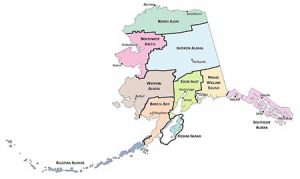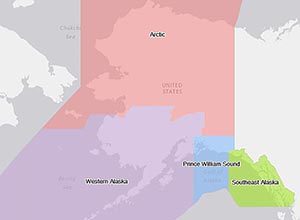Recent council concerns about a proposed change to Alaska’s spill response plan have been alleviated for now. However, the council is following a new proposal that also has the potential to affect stakeholder input.
In a letter to the council on September 1, the Alaska Department of Environmental Conservation, or ADEC, announced that its proposal to change the Regional Stakeholder Committee had been withdrawn. The Regional Stakeholder Committee is a vital tool for public involvement during oil spills, and has been effective for communication during spill drills and exercises in Prince William Sound for over a decade.
Early in 2016, the Alaska Regional Response Team, or ARRT, a group made up of 15 different federal and state agencies that share responsibilities for managing oil and chemical spill responses in Alaska, proposed changes that could have reduced the council’s, and the public’s, access to important information about a spill. The change would also have reduced citizens’ input to spill response leaders.
Involving citizens was recognized by Congress and Alaskans as an important aspect in oil-spill laws and regulations that were overhauled after the Exxon spill.
During the public comment period that followed, the council and several local communities and organizations supported keeping the committee as it was, rather than splitting stakeholders into two groups. One of the new groups, which would have included the council, would have received far less information and access to decision-makers than the other.
ADEC stated that the workgroup that put the proposal forward met on August 31, at which time a determination was made to withdraw the proposal.
New proposal open for public comment
On September 2, ADEC issued a new proposal to change the spill contingency plans for Alaska so that they would be more consistent with the national framework for contingency plans. According to the ADEC website, one piece of the proposed new plan would consolidate Alaska’s ten contingency planning regions, called “subareas,” into four “area” plans governed by one “regional” plan for Alaska.
The details currently in these subarea plans, which includes local information, environmental conditions, resources at risk, and customized strategies for responding to spills in specific locations, would be transferred to “geographical annexes” in the new plan.
As proposed at this time, the borders of the area that covers Prince William Sound would remain similar to the current subarea, however Kodiak and Cook Inlet would be part of the “Western Alaska Area,” which would also include the Aleutian Islands, Bristol Bay, and portions of the Bering Sea.
“The council is currently evaluating the pros and cons of consolidating the regions and associated plans to be more consistent with the response planning framework throughout the United States, including how this new proposal might affect communications between spill responders and those affected by a spill,” said Donna Schantz, executive director of the council. “We plan to seek input from our members and other stakeholders in order to provide meaningful advice and recommendations to the Alaska Department of Environmental Conservation, Environmental Protection Agency and United States Coast Guard on this proposal.”
Public comments are due November 15. Please check back for updates and links to more information as it becomes available.

